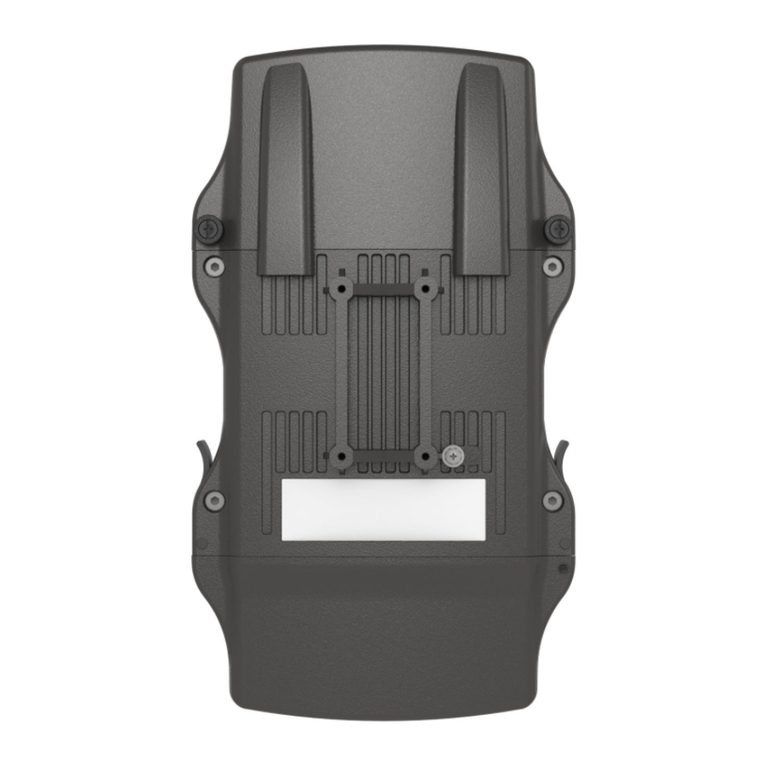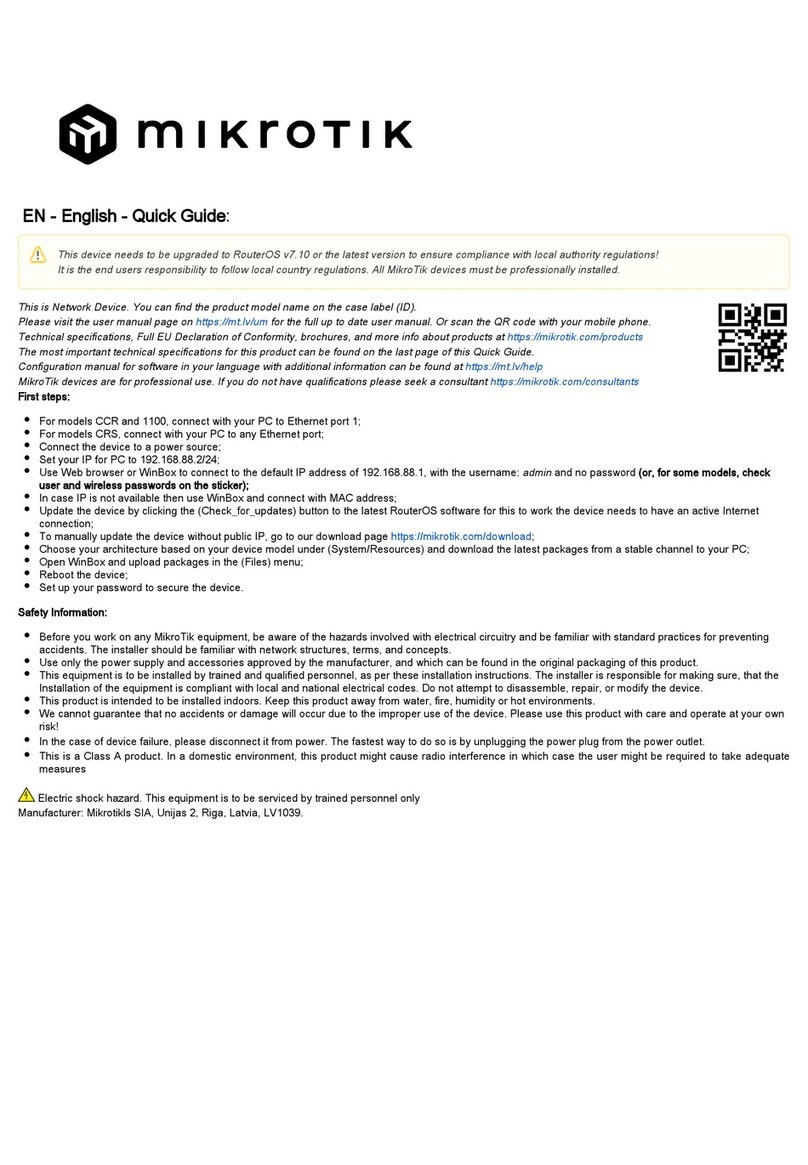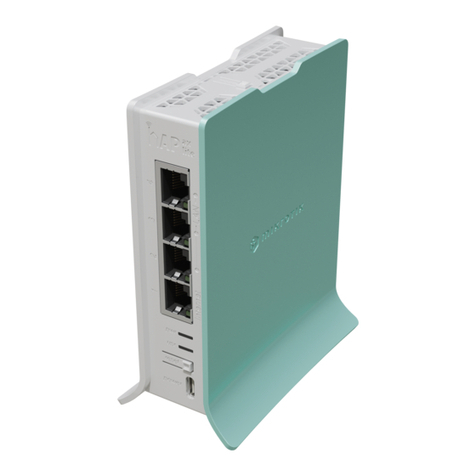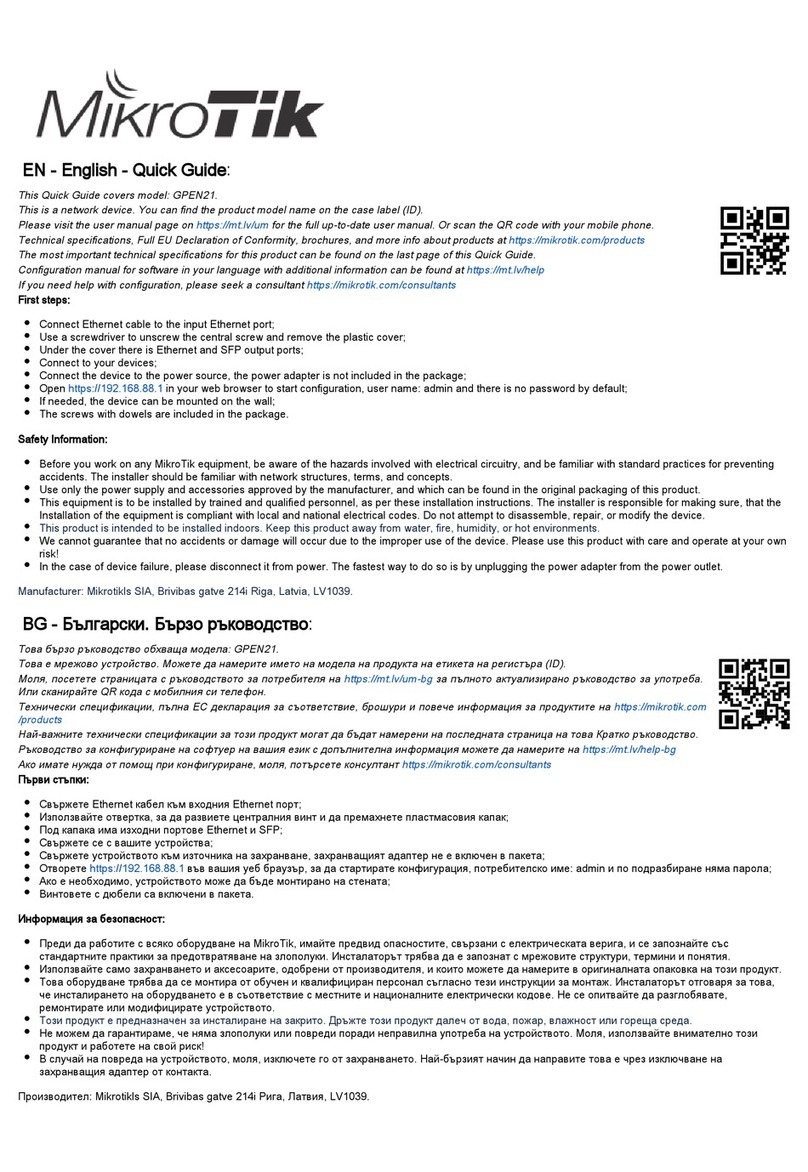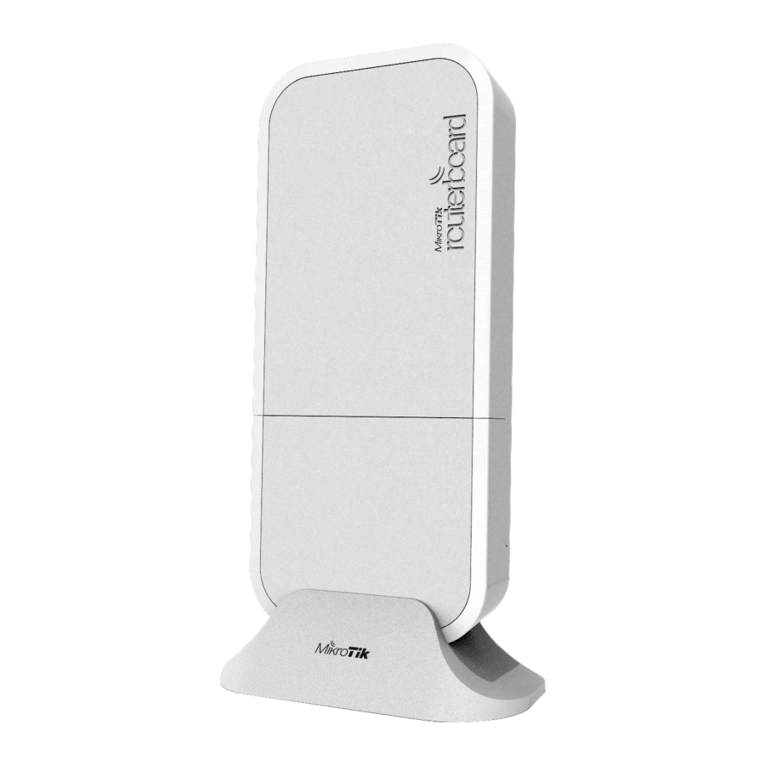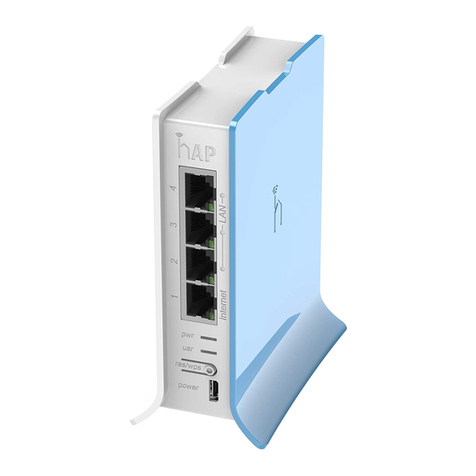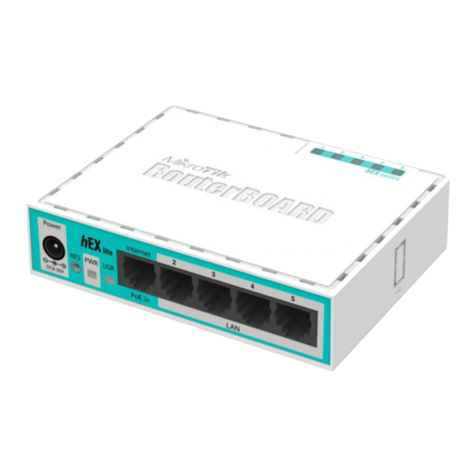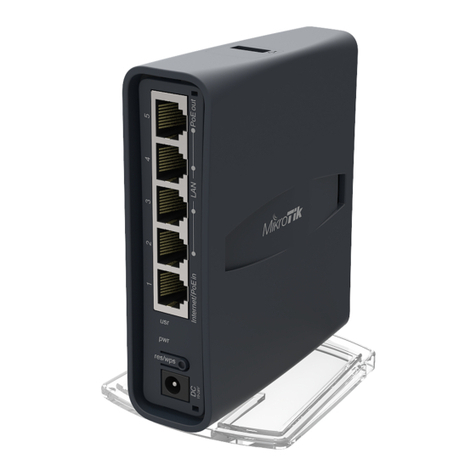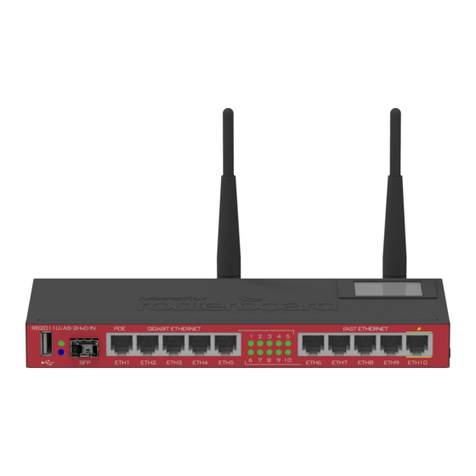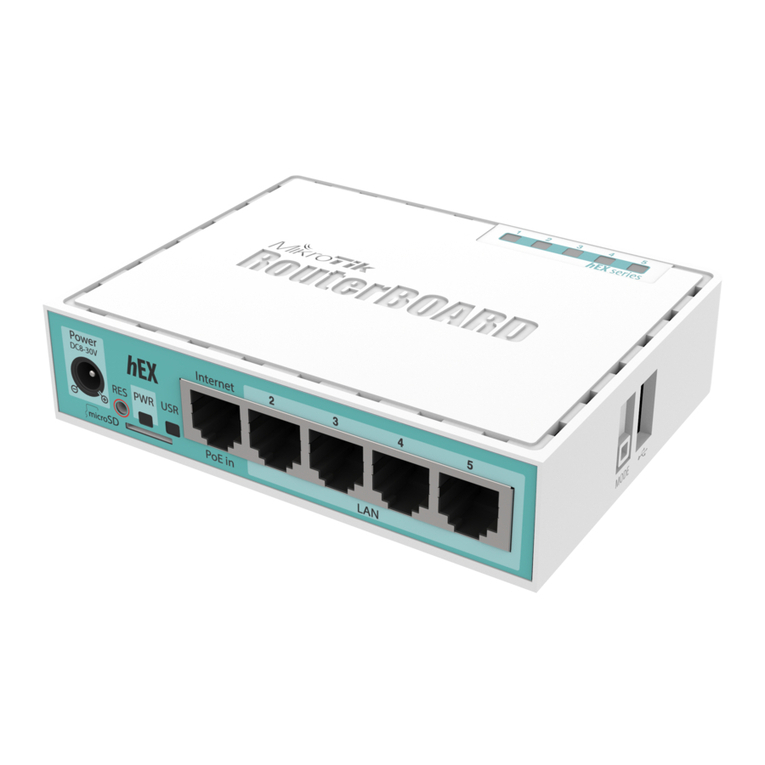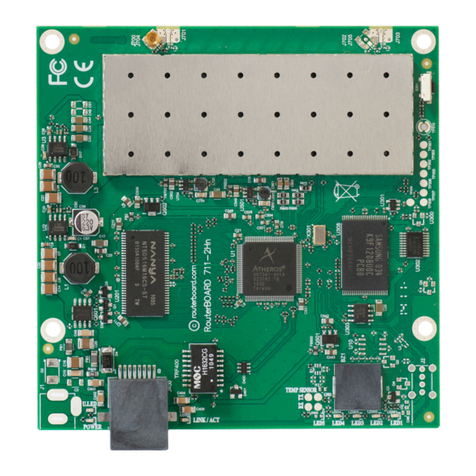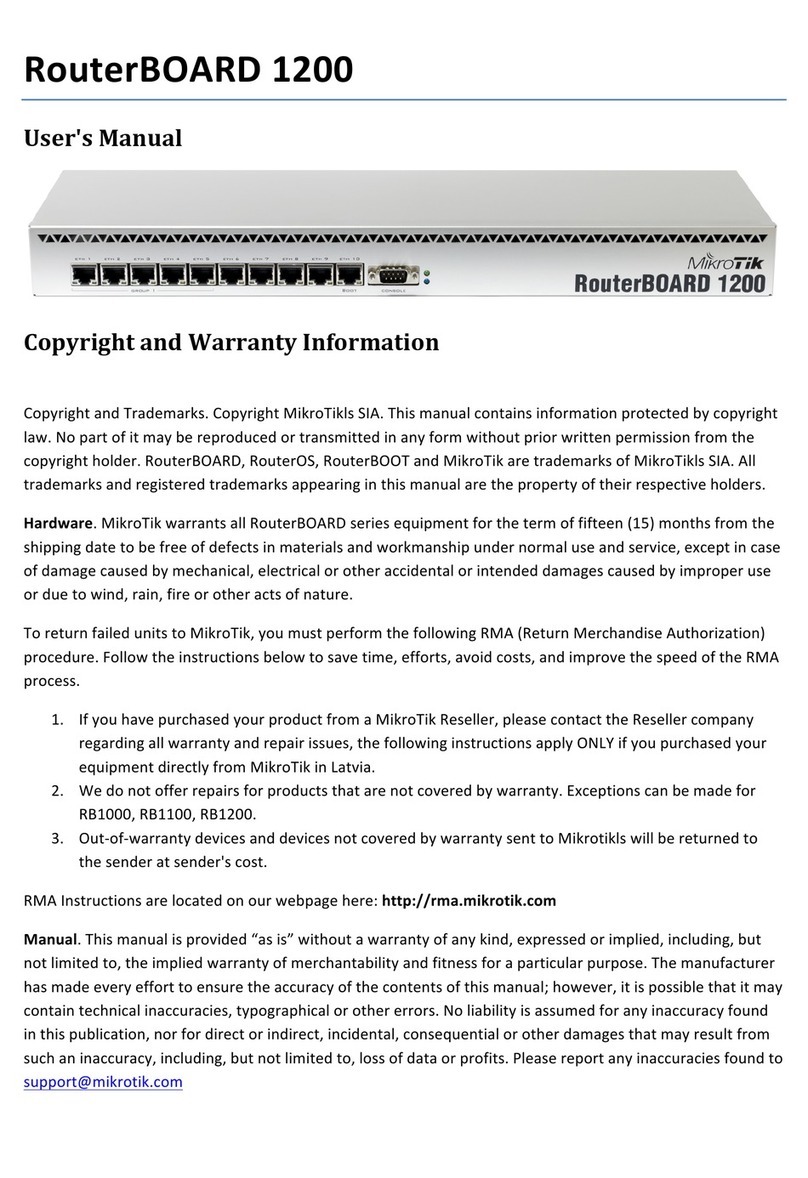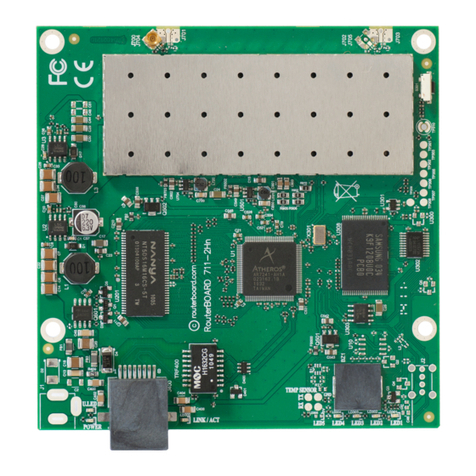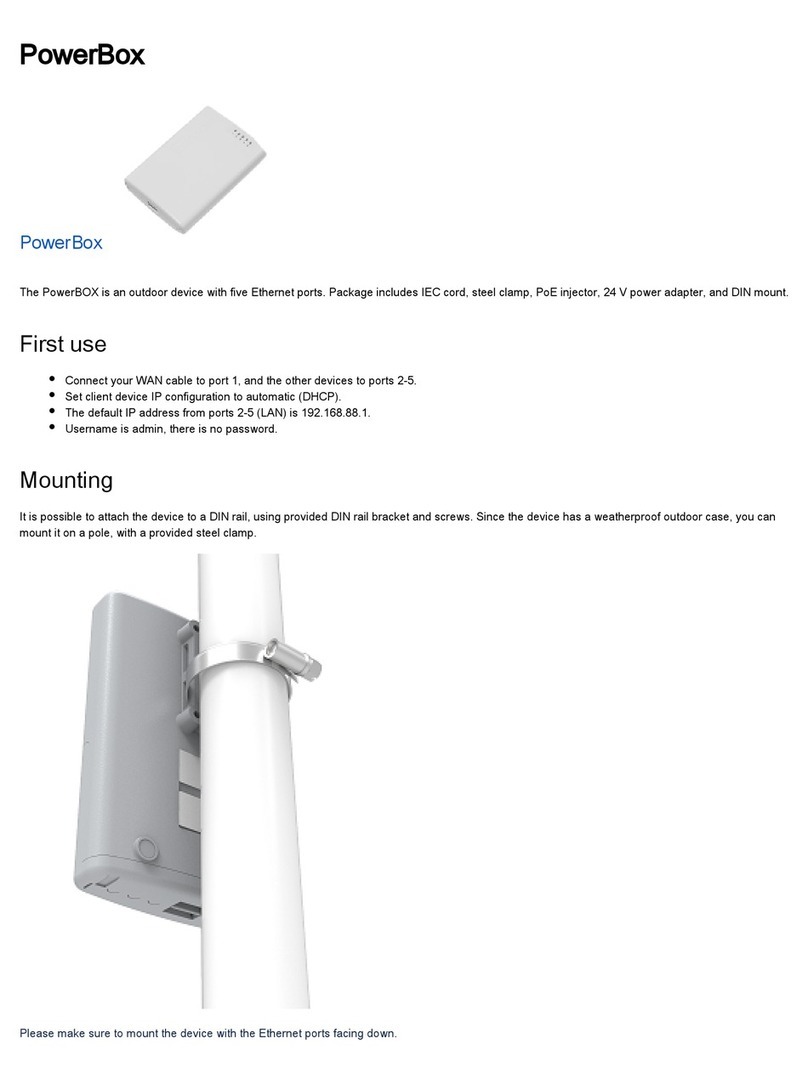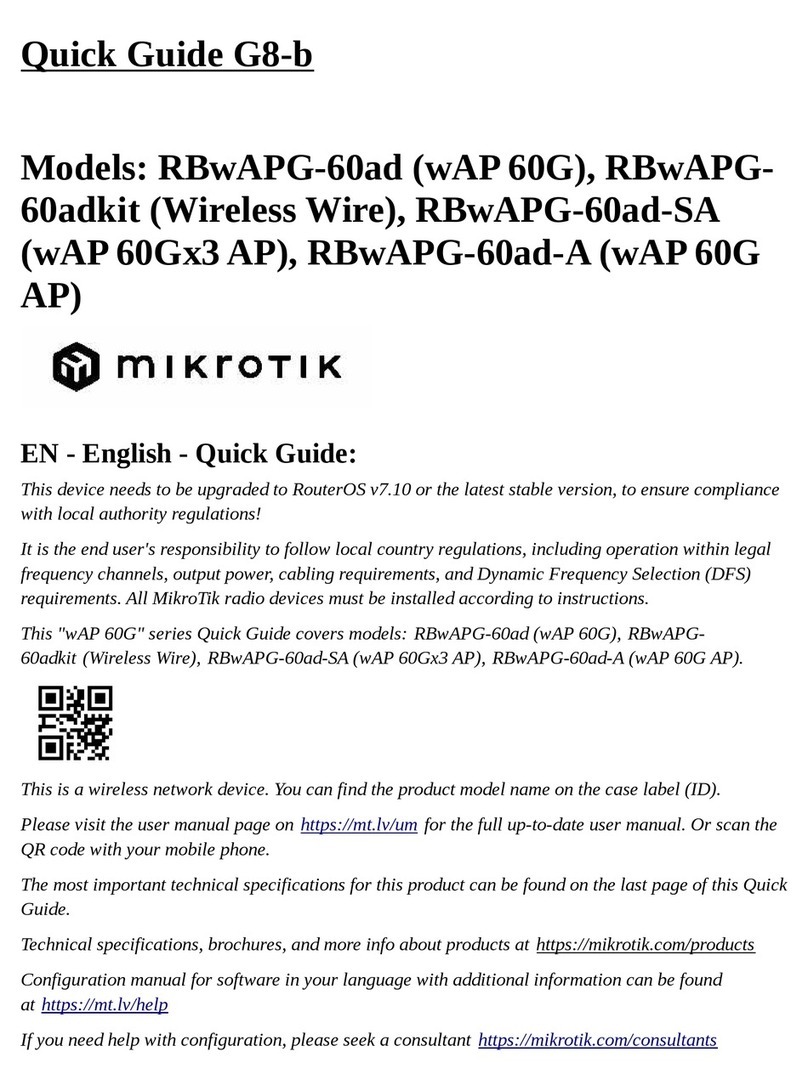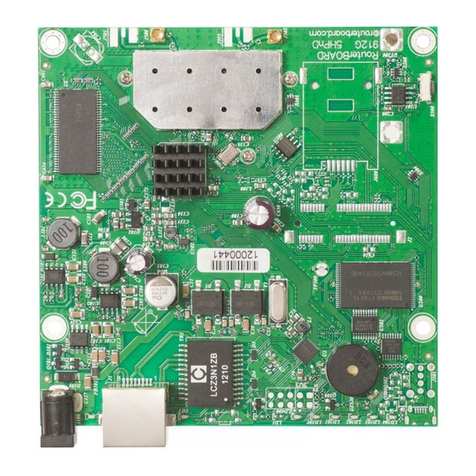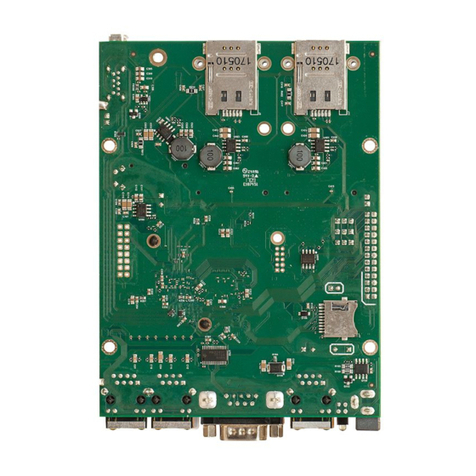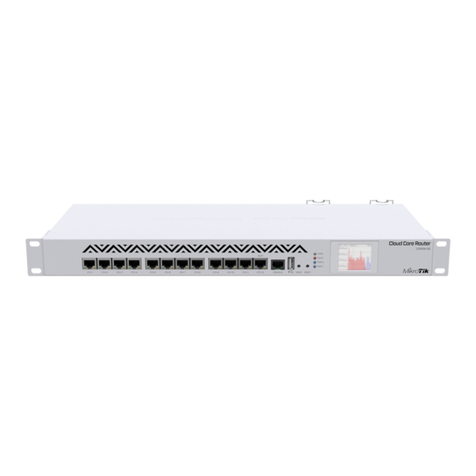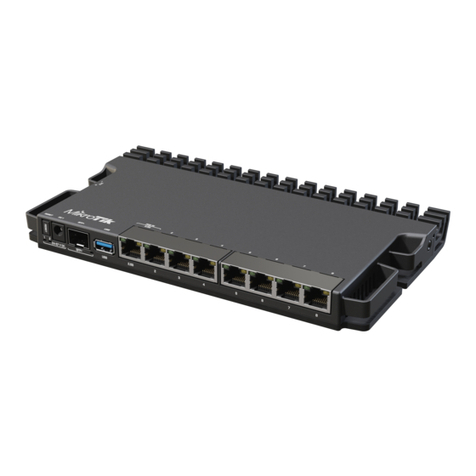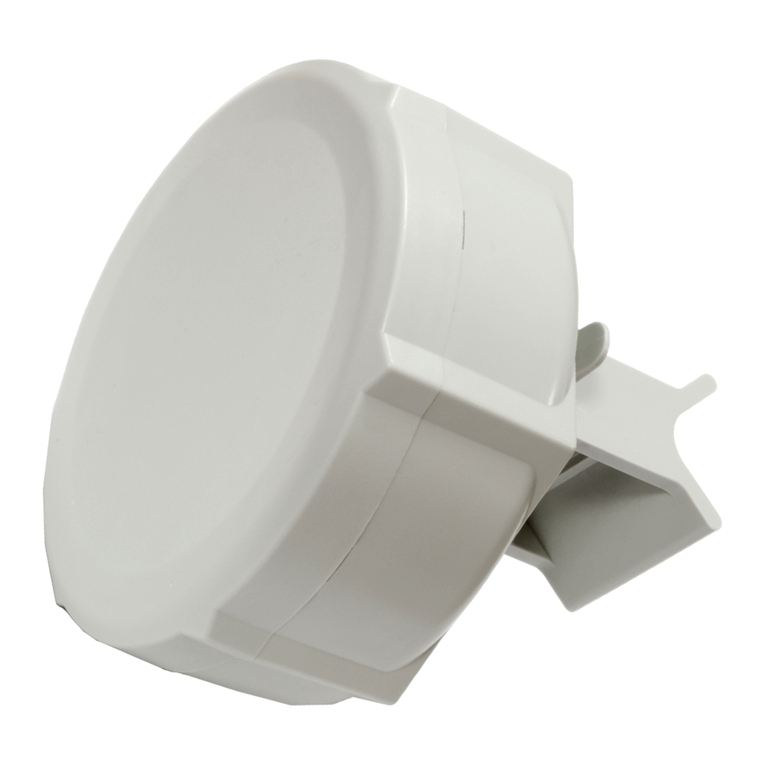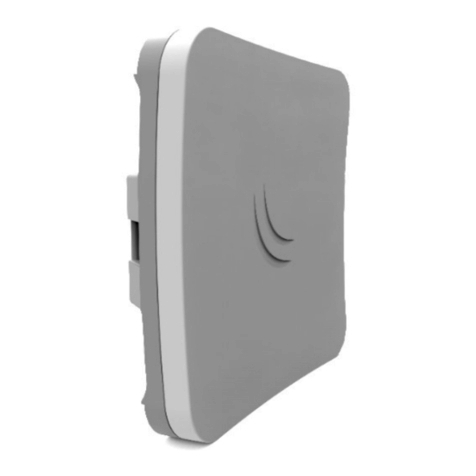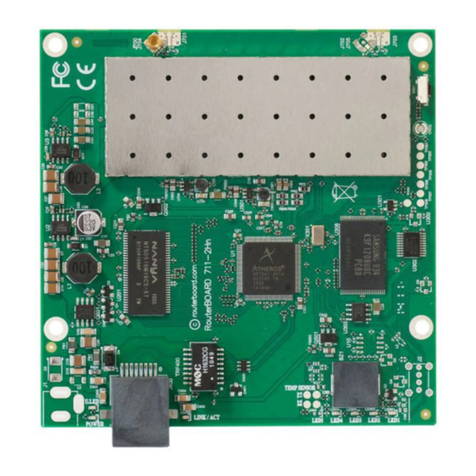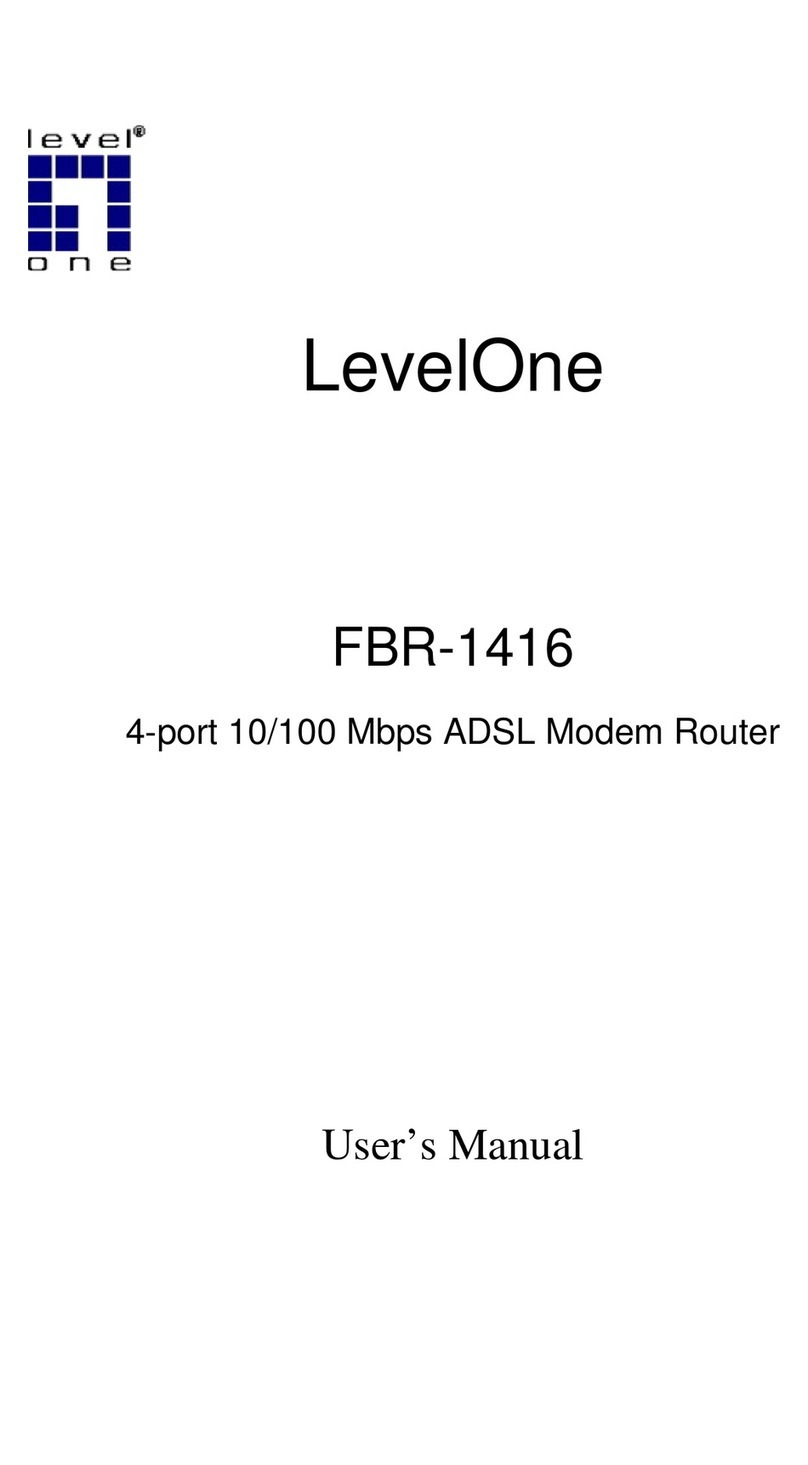
RouterBOARD 8 00
Quick Setup Guide and Warranty Information
Assembling the Hardware
First use of the device:
•Insert the MiniPCI cards. RouterBOARD 800 provides
four MiniPCI slots and one iniPCI-e slot. SIM slot is
not provided, so this slot can't be used with 3G cards.
•(Optional) attach a daughterboard for additional
interfaces
•Connect antenna cables to the MiniPCI cards.
•Install the device in a case
•Plug in power cable to turn on the board
•If installing this device in an outdoor location, ensure
proper grounding is installed as well.
Powering
The board accepts powering fro either the power jack or the
LAN1 Ethernet port:
●direct-input power jack J14 (5.5 outside and 2
inside dia eter, fe ale, pin positive plug) accepts
10..56 V DC.
●LAN1 Ethernet port J12 accepts 38..56 V DC input (at
the RouterBOARD. Higher voltage needed to
co pensate for power loss on long cables; 48V
suggested) fro Power over Ethernet injectors. RB800
supports 802.3af PoE standard powering.
The axi u output of the power supply to the extension
cards is nor ally at about 25W (7.5A at 3.3V), however with
appropriate cooling, the onboard power supply is capable to
provide higher power output to the extension cards. Without
load and extension cards, RB800 consu es ~8.2W.
Booting process
First, RouterBOOT loader is started. It displays so e useful infor ation on the onboard RS232C asynchronous serial port.
The serial port is set by default to 115200bit/s, 8 data bits, 1 stop bit, no parity. Note that the device does not fully
i ple ent the hardware (RTS/CTS) flow control, so it is suggested to try to disable hardware flow control in the ter inal
e ulation progra in case the serial console does not work as expected, and if it does not help, ake a new cable using the
pinout given in the MikroTik Online Wiki. The loader ay be configured to boot the syste fro the onboard NAND, and/or
fro network. See the respective section of User's anual on how to configure booting sequence and other BIOS
para eters.
DHCP or BOOTP (configurable in loader) protocols allow the RouterBOARD 800 series board to get an initial IP address, and
provide the address of a TFTP server to download an ELF boot i age fro . It is especially useful for software installation.
See the User's anual for ore infor ation. Note that you ust connect the RouterBOARD you want to boot and the
BOOTP/DHCP and TFTP servers to the sa e broadcast do ain (i.e., there ust not be any routers between the – they
ust be on the sa e Ethernet switch).
Extension Slots and Ports
●Three Gigabit Ethernet ports, supporting auto atic cross/straight cable correction (Auto MDI/X), so you can use either
straight or cross-over cables for connecting to other network devices. The first Ethernet port accepts 38..56 V DC
powering fro a PoE injector (802.3af PoE supported). The other two Ethernet ports do not support PoE powering.
●Four MiniPCI Type IIIA/IIIB ports with 3.3V power signaling.
●DB9 RS232C asynchronous serial port.
Operating S stem Support
Currently tested operating syste is MikroTik RouterOS (starting fro v4).
See www.routerboard.co for ore infor ation. Contact support@ ikrotik.co for support questions. 1-Dec-2009
